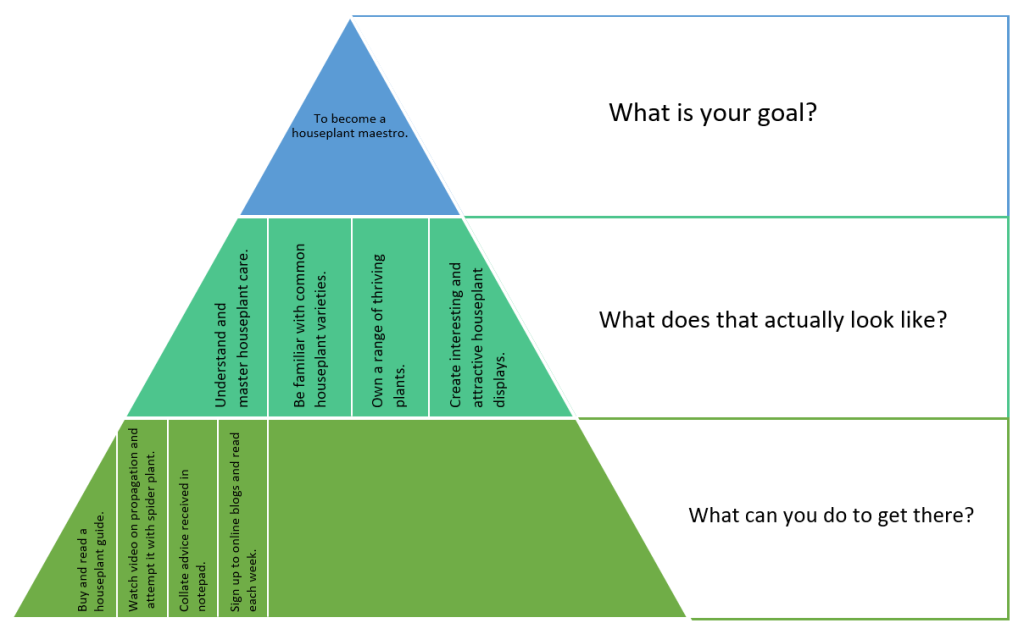This is my contribution to the Ministry of Testing January 2021 Blogger’s Challenge.
It’s generally agreed that for someone to have the best chance of achieving something, they must recognise it as a goal. But that’s just step one; once you’ve decided on a goal, how do you go about managing it? Deciding this can be a big obstacle to making progress, and making the wrong decision can be fatal for your goal.
There are lots of books, articles, courses and videos available that insist they have the answer to your goal management problem, that following their technique will unlock your capability to achieve your goals. Over a number of years, I’ve found that many of these contradictory assertions are indeed right – they were the best way for me to achieve that goal.
I believe that the ‘best’ goal management technique varies, not just from person to person, but also for individuals over time and depending on their goal. Therefore, in this blog post, I’m not going to discuss any particular technique, but instead pull out some key learnings that I’ve taken away from across the various frameworks I’ve seen and used. These are points that I’ve found critical when striving for my goals and supporting others to achieve theirs.
- Own it: This is your goal and you need to understand that only you can make it happen. It’s no good to agree a goal with your team or your manager, and then hope that it’ll just come true or that someone else will make it happen. You need to own your goal and put in the work to make it happen.
- Be committed: You need to believe that you can and will achieve your goal. If you don’t believe you can achieve it, or if you think of it as more of a WIBNI, it won’t happen.
- Have clarity: Understand what your goal really is. Take the time to really think it through and be honest with yourself: what is it you actually want to achieve? Once you’ve done that, double check: if this is what you achieve, will you be satisfied?
- Outline the path to success: Once you’ve set a goal, you need to have an understanding of how you will get there. Personally, as a visual thinker, I find that the best way to approach this is to position my goal at the top of a pyramid, and then to fill in the lower layers as building blocks required to reach that peak. The middle layer consists of a deeper dive into what my goal actually means, and the third layer contains actions which push me towards an element in the second layer (so, in the lockdown-inspired example below, all the actions in the bottom layer will push me towards the “understand and master houseplant care” objective – in a complete plan, there would be actions corresponding to the other objectives, too).

- Continuously iterate: As you make progress, you’ll learn new information: new and different ways to make progress, reasons things you’d planned won’t help you progress, or even realisations that you want to adapt your goal to achieve something different. Make sure you give yourself regular opportunities to recognise this new information, think it through properly and integrate it into your plan.
- Get the resources you need: Identify what you need to be able to achieve your goal. What time, money, information, equipment, access to people, or skills do you need? Do you have access to this? If not, make sure you work out how to get it!
- Share your ambitions: Tell others about your goal. If they know, they’ll be able to help. I often hear people asking whether or not it’s a good idea to mention their ambition to their team, mentor or manager. Unless your environment isn’t a healthy one, I believe it’s a no brainer! If someone’s there to help you, they can only do that effectively if they understand what ‘help’ is. Also, by sharing your goal, you unlock the possibility of accountability partners; these can be invaluable when it comes to progressing a difficult plan.
And one last piece of advice, to summarise how I started this post…
- Innovate: Don’t just stick to the same system blindly; you might get too used to it and stop finding it motivational, or it might not work for a specific goal you have. Ensure you regularly assess whether you’re making the progress you want to, and if not, you may need to try a different approach!
